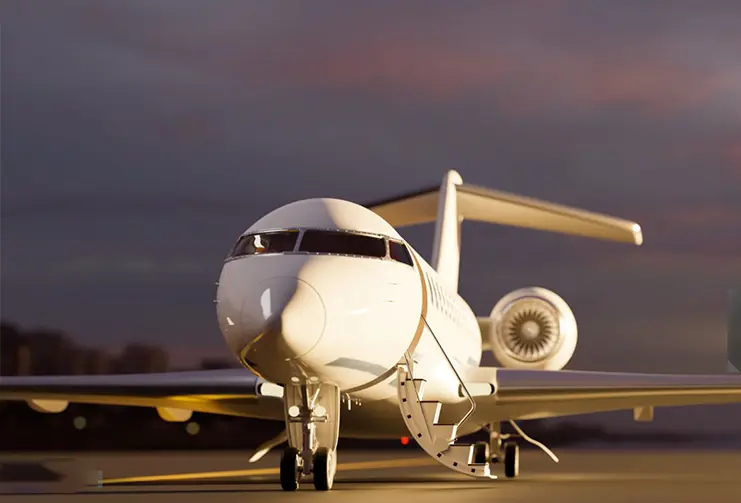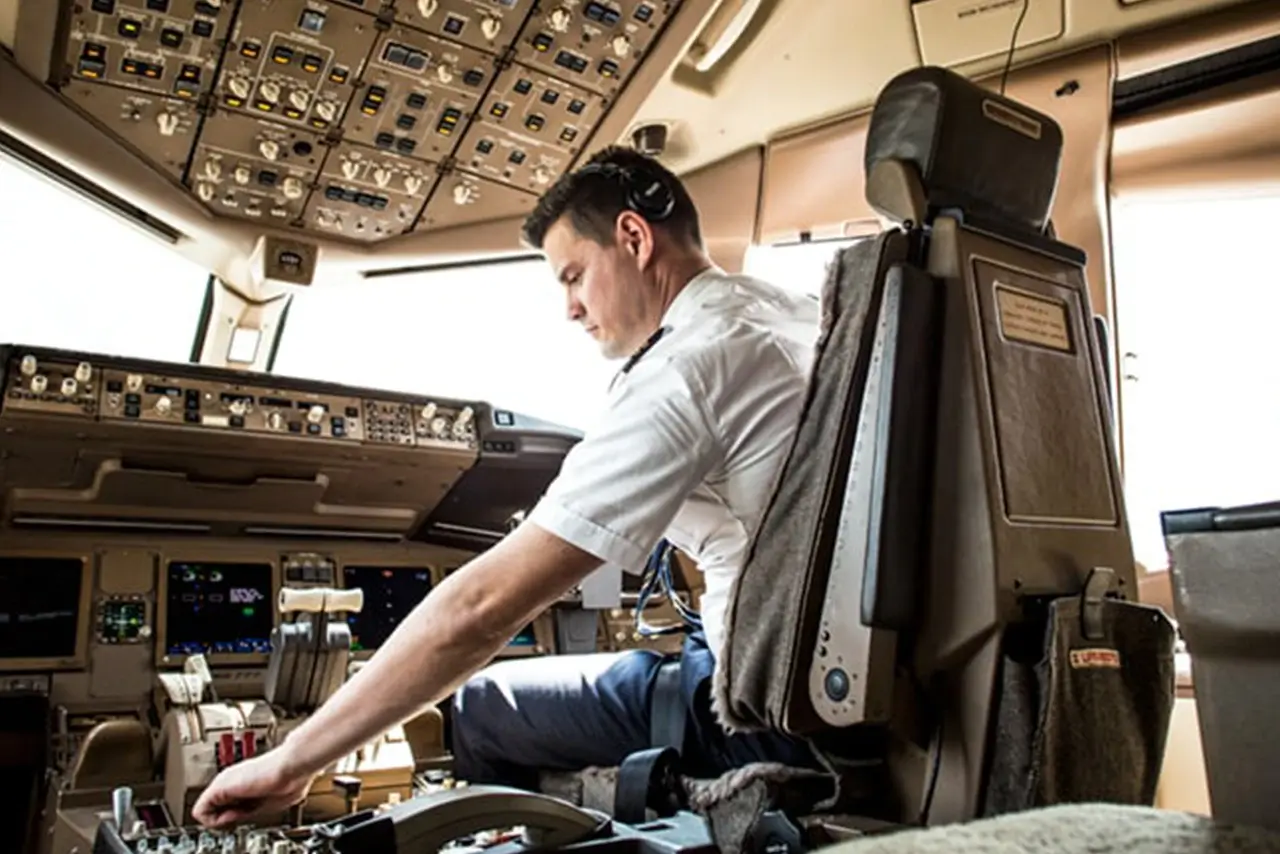
Instrument Rating (IR)

Unveiling the Mysteries: Your Guide to Earning an Instrument Rating in the Philippines
Have you ever gazed out the window of an airplane, marveling at the pilot expertly navigating through clouds and challenging weather conditions? The Instrument Rating (IR) unlocks this power, equipping you to fly safely and confidently even when visibility is limited. If conquering the skies in any weather ignites your passion, obtaining your IR in the Philippines could be the key to reaching new heights.
Unlocking the Freedom of Navigation:
The IR empowers you to:
- Fly through clouds and low visibility conditions: Navigate using instruments, ensuring safety and efficiency.
- Operate in challenging weather: Conquer rain, fog, and other challenging conditions while staying on course.
- Expand your operational capabilities: Access more airports and airspace regardless of weather limitations.
- Enhance your overall piloting skills: Develop advanced decision-making and instrument proficiency.
Charting Your Course: Embarking on IR Training:
The journey to your IR demands dedication and comprehensive training, encompassing:
- Advanced Ground School: Master the theory and procedures of instrument flight, instrument systems, and navigation methods.
- Simulator Training: Hone your instrument flying skills in a controlled environment before venturing into actual clouds.
- IFR Flight Training: Practice instrument procedures and decision-making under the guidance of experienced instructors in actual aircraft.
- Examinations: Demonstrate your acquired knowledge and proficiency through written, oral, and practical assessments conducted by the Civil Aviation Authority of the Philippines (CAAP).
Taking the First Step: Prerequisite Checks:
Before embarking on this exciting adventure, ensure you meet the following criteria:
- Hold a valid Private Pilot License (PPL): This serves as the foundation for your IR training.
- Age: No specific age requirement, but most applicants are at least 18 years old.
- Medical Fitness: Maintain a valid Class 2 Medical Certificate from a CAAP-approved Aviation Medical Examiner.
- English Proficiency: Demonstrate clear communication skills, crucial for instrument flying interactions.
Demystifying the Journey: Exploring the CAAP Training Syllabus:
The CAAP outlines a structured syllabus for IR training, ensuring consistent skill development:
- Advanced Ground School: Covers subjects like instrument systems, instrument flight rules (IFR), navigation procedures, emergency procedures, and decision-making.
- Simulator Training: Includes a minimum of 30 hours of simulator time practicing instrument approaches, holding patterns, and other IFR procedures.
- IFR Flight Training: Includes a minimum of 10 hours of dual flight instruction and 5 hours of solo flight under instrument conditions.
Breaking Down the Stages:
Your training typically unfolds in these phases:
- Advanced Ground School: Deepen your theoretical understanding of instrument flight principles and procedures.
- Simulator Training: Develop basic instrument flying skills and practice complex maneuvers in a safe environment.
- IFR Flight Training: Begin under dual instruction, gradually progressing towards solo instrument flight experiences.
- Practical Test: Showcase your acquired skills to a CAAP-designated examiner.
- License Issuance: Upon successful completion of all requirements, proudly receive your coveted IR!
Investing in Your Future: Understanding the Costs:
The exact cost of obtaining your IR varies depending on several factors:
- Flight School: Different schools offer diverse program structures and pricing models.
- Aircraft Availability: Hourly aircraft rental rates for IFR-equipped aircraft impact the overall cost.
- Simulator Availability: Simulator access and hourly fees influence the cost.
- Instructor Rates: Consider the instructor’s experience and hourly charges.
Do I Need to Pay Upfront?
Most flight schools offer flexible payment options to spread the cost throughout your training. Explore installment plans, scholarships, and potential financial aid to make your dream achievable.
Time Commitment: How Long Will It Take?
The duration of your IR training depends on your dedication, available time, and learning pace. On average, expect several months, with dedicated individuals potentially completing it within 3-6 months.
Estimating the Investment:
While exact costs fluctuate, consider this range for budgeting:
- Cost: ₱560,000 – ₱600,000
CAAP Requirements for Your IR:
Remember, obtaining your IR involves adhering to specific CAAP regulations:
- Maintain a valid Class 2 Medical Certificate.
- Meticulously document your flight training under instructor supervision.
- Meet the minimum flight time requirements: This includes total flight time, instrument flight time, simulator time, and solo instrument flight time as specified by CAAP regulations.
- Pass both the written and practical examinations conducted by CAAP-designated examiners.
- Demonstrate clear English communication skills during all training and assessments.
Beyond the Basics: IR Upgrades and Enhancements:
Your IR serves as a springboard for further specialization and career advancement:
- Multi-engine Instrument Rating (MEIR): Qualify to fly multi-engine aircraft under instrument conditions.
- Commercial Pilot License (CPL) with IR: Combine your instrument proficiency with commercial privileges.
- Airline Transport Pilot License (ATPL) with IR: Reach the pinnacle of aviation with advanced instrument skills and multi-crew operations.
Remember, the sky’s the limit! Obtaining your IR unlocks a new world of flying possibilities, allowing you to navigate challenging weather and expand your operational horizons. Embrace the continuous learning journey, challenge yourself with further ratings, and soar to new heights in your aviation career.
Ready to Take Off?
If the thrill of conquering clouds, defying weather limitations, and navigating with precision ignites your passion, take the first step! Research reputable flight schools in the Philippines, compare their programs and costs, and schedule introductory flights to experience the magic of instrument flying firsthand. With dedication, passion, and the right guidance, you can transform your dream of mastering instrument flight into a reality that takes flight.
Additional Resources:
- Civil Aviation Authority of the Philippines (CAAP): https://caap.gov.ph/
- Aircraft Owners and Pilots Association (AOPA) Philippines: https://www.philstar.com/tags/aircraft-owners-and-pilots-association-philippines
- List of Accredited Flight Schools in the Philippines: https://caap.gov.ph/wp-content/uploads/2023/10/List-of-Pilot-Maintenance-Schools-As-of-Sept.-1-2023.pdf
Start your journey today and let the boundless skies welcome you with open arms!

Frequently asked questions
What is the instrument rating (IR) in the Philippines?
The Instrument Rating (IR) in the Philippines allows pilots to fly under Instrument Flight Rules (IFR), meaning they can navigate and navigate solely by relying on instruments and radio aids, regardless of weather conditions. This is valuable for professional pilots and hobbyists seeking more freedom and safety in diverse weather scenarios.
Is instrument rating (IR) worth it?
Absolutely! An IR offers significant benefits:
-
Increased Safety: Fly through clouds, fog, or low visibility situations safely.
-
More Flight Opportunities: Access airports with limited visibility procedures and expand your flying reach.
-
Career Advancement: Essential qualification for many commercial pilot jobs.
-
Personal Satisfaction: Master advanced flying skills and gain confidence in challenging conditions.
How hard is it to get an instrument rating (IR) in the Philippines?
IR training requires dedication and focus. Expect theoretical knowledge combined with simulator and real-flight training. Difficulty depends on prior experience and individual learning styles.
How can I get my instrument rating fast(IR) ?
While accelerated programs exist, a solid foundation is crucial. Focus on quality training over speed. Aim for programs that meet your learning pace and budget.
How much does an instrument rating cost in the Philippines?
Expect a range of $9,500-$10,500 USD depending on school, aircraft type, and training hours.
What percentage of pilots have instrument rating?
Around 20-30% of private pilots in the Philippines hold an IR, showcasing its increasing popularity.
How many hours does it take to get an instrument rating (IR) in the Philippines?
Plan for 20-30 hours of simulator training and 20-30 hours of real-flight instruction, but individual needs may vary.
Do you need solo time for instrument rating (IR)?
No solo time is required for the IR rating in the Philippines, unlike the Private Pilot License (PPL).
Does instrument rating (IR) expire?
Your IR rating needs a proficiency check every six months to remain valid.
Can private pilots fly IFR?
Private pilots with a PPL can’t fly under IFR regulations, requiring the IR for instrument flight capabilities.
Can you fly at night with an instrument rating (IR)?
An IR allows night flights (with other qualifications), while VFR (Visual Flight Rules) flights restrict night operations.
Can you fly an instrument approach without an instrument rating?
You cannot legally conduct instrument approaches without a valid IR rating.
What comes after instrument rating (IR)?
Several paths exist after your IR:
-
Multi-Engine Rating: Fly larger aircraft with multiple engines.
-
Commercial Pilot License (CPL): Qualifies you for commercial flying operations.
-
Airline Transport Pilot (ATP): Become a captain on airliners.
Free Career Guide

Want to find out more about our pilot courses?
Download our free eBook to learn all about pilot training in the Philippines, including the qualifications needed, the training process, available courses, and career opportunities. Find out how you can take the first step toward a rewarding career in aviation.






